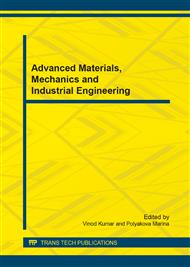p.146
p.151
p.156
p.160
p.164
p.169
p.174
p.181
p.189
Optimization of Cutting Parameters of CNC Milling for Aircraft Components Using Design of Experiments
Abstract:
Machining the components precisely and accurately on consistent basis is a huge challenge in the aerospace industry. Nowadays, manufacturer's demand to machine the components to tighter tolerances. In this paper, a case study of machining aircraft rib components in CNC milling was selected and tighter tolerances were defined. For this, two factors: cutting speed and feed rate was considered with five levels. Thus, 25 different combination of experiments were conducted for design of experiments. Several different statistical tools such as normality test, DOE and ANOVA were used. The study outcome found that feed rate has more significant effect over the machining of aircraft rib components than cutting speed; and there is no significant effect found when interaction of both cutting speed and feed rate were defined. The hypothesis test was performed to determine the optimum cutting parameters for the given condition using full factorial ANOVA test.
Info:
Periodical:
Pages:
164-168
Citation:
Online since:
July 2014
Keywords:
Price:
Сopyright:
© 2014 Trans Tech Publications Ltd. All Rights Reserved
Share:
Citation:


